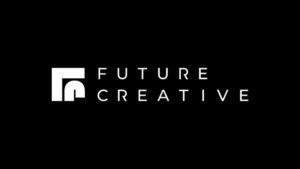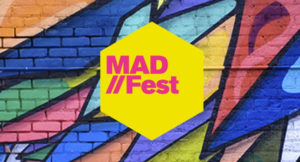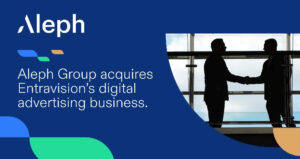Marcus Harding is the founder/owner of digital creative specialist agency deviceful. We asked Marcus to talk us through the findings of his latest report on the issues facing the publishing industry
The publishing industry faces unprecedented upheaval driven by changes in audience attribution, funding models, content consumption, automation, and more. We spoke to a selection of leading publishers to learn more about their challenges and the opportunity they create and to gauge opinions on how they can continue to thrive in the future.
The way the cookie crumbles
There’s no surprise that the death of the 3rd party cookie is at the forefront of publisher concerns as the media buying landscape adjustments continue apace. Building resilient first-party data audiences is a priority for all publishers; most of those we spoke to have dedicated significant resources to ensure their preparation. There will be some short-term pain, but the power of proprietary publisher data should create significant opportunities in the future. For many, it will be a welcome reset.
Forced change often creates overdue innovation, and as privacy persists as a major consumer concern, trusted publishers with brilliant content are in the driving seat for leveraging paradigm shifts in brand’s campaign conversations. The majority of publishers we spoke to felt that they will be stronger in a post-cookie world. Only those publishers who aren’t prepared face a difficult and uncertain future.
“Re-claiming a one-to-one relationship with readers will be good for the long term.” – Lucy Marchington, The Financial Times
To subscribe or not – thats the question
Most premium publishers agree that subscriptions have a role to play in financing their content, yet consumer expectations aren’t always aligned. Many have grown used to reading free content and have been spoiled. With so many sources for content, credibility has been an issue. While there is optimism that the pendulum will swing back to premium ‘paid for’ news, there are limitations to how many services people will be willing to subscribe to. We’ve seen this with streaming services, and the cost of living crisis exacerbates the problem of retention and acquisition. The consensus among publishers is that a hybrid financing model will be required. Smarter advertising solutions can drive higher yields, and some people will always be willing to pay for quality content.
A hybrid model should create more choices for people, and provide a clearer understanding of the value exchange required to consume content at different price points. A model of ad-funded Netflix, with lower subscriptions, is likely and one already embraced by Now TV.
Smarter ad formats and the continued rise of video inventory
News providers have to be careful not to price people out of trusted sources, so a blended solution will need to be refined, but if done properly, can benefit all parties. Niche publishers with highly valued content and audiences will be more reliant on a subscription model, mainly as a necessity given their lack of scale.
As revenue streams and data management have evolved, so have ad formats and solutions. Publishers have needed to become more intelligent with their offerings as brands pivot away from traditional ad slots, and content integration and video become even more important. A theme that continually came up in our survey was the need to embrace video solutions more effectively as demand continues to grow.
The demand includes both video advertising provided by brands and content production from publishers. The latter has proven to be a driver of growth for multiple sites and adds a level of authenticity to the brand messaging. Inventory pressure persists across the industry, which suggests the opportunity for revenue growth exists for those with a refined premium offering.
High-impact creative remains popular, as do groundbreaking executions which resonate with their target audience. Custom solutions which seamlessly integrate into content are becoming seen by clients as the more effective consumer conversation. The perception of product purchases within units or a more intelligent approach to affiliate marketing is evolving, where publishers can add to their bottom line. Seamless, unobtrusive ads that resonate with the audience, with contextual relevance, are for many: the ultimate goal.
Is it sustainable?
Some publishers also expect sustainability to be a consideration as creative solutions evolve. As younger audiences seek out sustainable solutions across many aspects of their life, perhaps the digital world acknowledging adverts’ carbon footprints, and looking to offset them accordingly, will become more of a talking point.
Creating consumer trust
Publishers are acutely aware that they’re in the best position to manage effective conversations with consumers for brands they advertise with.
The unique trust publishers have created with their audience is a powerful tool for advertisers to access. Original branded content can provide the authentic messaging that brands covet. They can also leverage this beyond the initial on-site placement. Ensuring each element of creative production resonates is the key to success, anything that jars with the consumer would be counterproductive. There are fears that these solutions could eventually become commoditised, but short term, they seem like a quick in which publishers can differentiate their offerings and highlight their importance.
“Brands are not looking to just sponsor content that could easily have the logo swapped vwith another brand. They’re looking for content that is bespoke, on-brand and well-aligned with their specific brand and messaging.” – Tara Michaels, Forbes Media
Technology driven efficiences
Across all digital, automation and innovation are hot topics. Most publishers welcome innovation in advertising as it creates a better experience for the end-user, and makes creative executions more memorable. Video is viewed by some as a product lagging behind the innovation seen elsewhere in the market and given its increasing importance, something that publishers would like to see addressed quickly.
The rise of AI and the dawning of the Metaverse
AI offers potential for a further level of targeting advertising. However, as publishers concentrate on establishing trust with their audiences, it might not be a priority in the
short term. Within some publisher business structures, they predict that automation will be more disruptive as previous roles become obsolete. The potential employee’s technological knowledge will be more important; rather than traditional skill sets like sales and marketing.
With this smörgåsbord of challenges and changes, it is hardly surprising that very few of the publishers we spoke to had even begun to consider the changes the metaverse might bring to their marketplace. Most want to wait to see the short-term impacts and believe that robust regulatory frameworks need to be in place before they begin to consider how to exploit opportunities. There’s optimism that it will create exciting creative placements, but it’s hard to envisage what these are short-term.
“The process of advertising on a publisher’s page is still too complex and delivery can result in a poor consumer experience.” George Oysseos, Planet Sport
Contextual and Getting Creative
Whilst power shifts back to publishers and contextual advertising, it has never been more vital for creative solutions that embrace all they offer. Ad creative is a form of storytelling that expertise publishers have in abundance. Tailored creative solutions can be a great differentiator for sites and broadcasters.
By taking ownership of this process in-house or with a trusted partner, publishers ensure they create ads that resonate with their audience rather than receive standard generic banners that run elsewhere. It allows them to innovate solutions that match context or become branded content that connects most effectively with their audiences. After all, they know them best.
“Given that publishers know their audience better than anyone, who better to add creativity and design concepts to a proposed campaign than the publisher themselves. They have the brand knowledge and history on their side to develop meaningful and powerful solutions.” –Tim Faircliffe, The Right Thing Media










